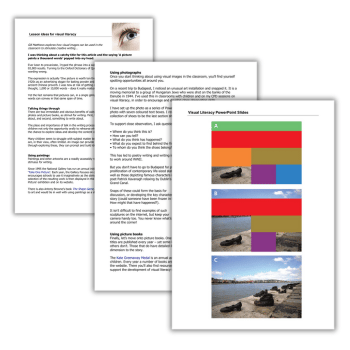In this four-page visual literacy guide, Gill Matthews explains how verbal interactions, paintings, photography and picture books can prompt pupils to think more deeply about characters and narrative.
There are two immediate and obvious benefits of using visuals, in the form of paintings, photos and picture books, as stimuli for writing.
First, they give children something to talk about, and second, something to write about.
The place and importance of talk in the writing process is well recognised. Talking gives children the opportunity orally to rehearse what they are going to write. It also gives them the chance to explore ideas and develop the content of their writing.
Many children seem to struggle with subject matter because their day-to-day encounters are, in their view, often limited.
An image can provide them with vicarious experiences; through exploring these, they can prompt and build ideas for writing.
Visual literacy ideas
Using paintings
Since 1995 the National Gallery has run an annual initiative for primary schools called ‘Take One Picture’. Each year, the Gallery focuses on one particular painting and encourages schools to use it imaginatively as the stimulus for cross-curricular activities.
The National Gallery then displays a selection of the resulting work in its annual ‘Take One Picture’ exhibition and on its website.
Using photographs
Many towns and cities feature life-sized statues – such as the statue of poet Patrick Kavanagh relaxing by Dublin’s Grand Canal.
Snaps of these could form the basis for discussion, or developing the key characters in a story (could someone have been frozen in time? How might that have happened?).
Gill Matthews is an education consultant specialising in the field of literacy. She runs training courses for teachers and has written a number of children’s books.

Similar resources
- No Refuge – Graphic novel activities about refugees for UKS2
- Short story writing – Author-led resources for KS1 and KS2
- Christmas activity sheets – KS1 / KS2 fun & educational printables
- Learning gaps – How to ensure no pupil drifts too far
- Writing horror – Write a scary scene with Fear Files: Hide & Seek









